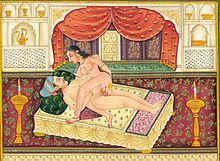
The Kama Sutra is an ancient Indian Sanskrit text on sexuality, eroticism and emotional fulfillment in life. Attributed to Vātsyāyana, the Kama Sutra is neither exclusively nor predominantly a sex manual on sex positions, but rather was written as a guide to the art of living well, the nature of love, finding a life partner, maintaining one's love life, and other aspects pertaining to pleasure-oriented faculties of human life. It is a sutra-genre text with terse aphoristic verses that have survived into the modern era with different bhāṣyas. The text is a mix of prose and anustubh-meter poetry verses. The text acknowledges the Hindu concept of Purusharthas, and lists desire, sexuality, and emotional fulfillment as one of the proper goals of life. Its chapters discuss methods for courtship, training in the arts to be socially engaging, finding a partner, flirting, maintaining power in a married life, when and how to commit adultery, sexual positions, and other topics. The majority of the book is about the philosophy and theory of love, what triggers desire, what sustains it, and how and when it is good or bad.

A sex position is a position of the body that people use for sexual intercourse or other sexual activities. Sexual acts are generally described by the positions the participants adopt in order to perform those acts. Though sexual intercourse generally involves penetration of the body of one person by another, sex positions commonly involve penetrative or non-penetrative sexual activities.

Doggy style is a sex position in which one participant bends over, crouches on all fours, or lies on their abdomen, for sexual intercourse, other forms of sexual penetration or other sexual activity. Doggy style is a form of a rear-entry position, others being with the receiving partner lying on the side in the spoons sex position or the reverse cowgirl sex position. Non-penetrative sex in this position may also be regarded as doggy style.

Mammary intercourse is a sex act, performed as either foreplay or as non-penetrative sex, that involves the stimulation of a man's penis by a woman's breasts and vice versa. It involves placing the penis between a woman's breasts and moving the penis up and down to simulate sexual penetration and to create sexual pleasure.

Betty Dodson was an American sex educator. An artist by training, she exhibited erotic art in New York City, before pioneering the pro-sex feminist movement. Dodson's workshops and manuals encourage women to masturbate, often in groups.
Vātsyāyana was an ancient Indian philosopher, known for authoring the Kama Sutra. He lived in India during the second or third century CE, probably in Pataliputra.
In Indian literature, Kāma-shastra refers to the tradition of works on Kāma: Desire. It therefore has a practical orientation, similar to that of Arthashastra, the tradition of texts on politics and government. Just as the latter instructs kings and ministers about government, Kāmashastra aims to instruct the townsman (nāgarika) in the way to attain enjoyment and fulfillment.
Hindu views of homosexuality and LGBT issues more generally are diverse, and different Hindu groups have distinct views.
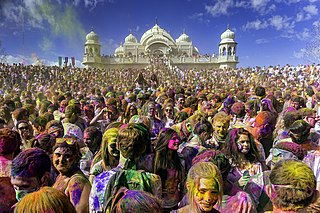
Kama is the concept of pleasure, enjoyment and desire in Hinduism, Buddhism, and Jainism. It can refer to "desire, wish, longing" in Hindu, Buddhist, Jain, and Sikh literature, however, the term also refers to any sensory enjoyment, emotional attraction and aesthetic pleasure such as from arts, dance, music, painting, sculpture, and nature.
The social construction of human sexuality and sexual behavior—along with its taboos, regulation, and social and political impact—has had a profound effect on the various cultures of the world since prehistoric times.
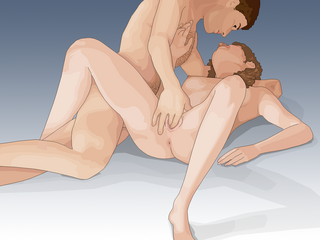
Fingering is sexual stimulation of the vulva or vagina by using the fingers. Vaginal fingering is legally and medically called digital penetration or digital penetration of the vagina. The term "digital" takes its significance from the English word 'digit', which refers to a finger, thumb, or toe. Fingering may also include the use of fingers to stimulate the anus.
Forster Fitzgerald Arbuthnot was a notable British Orientalist and translator.
India has developed its discourse on sexuality differently based on its distinct regions with their own unique cultures. According to R.P. Bhatia, a New Delhi psychoanalyst and psychotherapist, middle-class India's "very strong repressive attitude" has made it impossible for many married couples to function well sexually, or even to function at all.
The Ratirahasya is a medieval Indian sex manual written by Kokkoka, a poet, who is variously described as Koka or Koka Pundit. The exact date of its writing is not known, but it is estimated the text was written in the 11th or 12th century. It is speculated that Ratirahasya was written to please a king by the name Venudutta. Kokkoka describes himself in the book as siddha patiya pandita, i.e. "an ingenious man among learned men". The manual was written in Sanskrit.
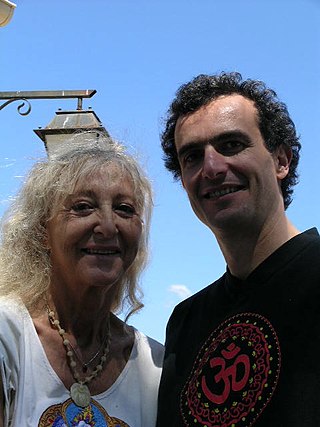
Margot Anand is a French author, teacher, seminar leader and public speaker. She has written numerous books including The Art of Sexual Ecstasy; The Art of Everyday Ecstasy; and The Art of Sexual Magic. Her mother was Protestant, and her father was Russian Orthodox and she was raised in Orthodox religion.

Pompoir is a sexual technique in which the woman uses her vaginal muscles to stimulate the man's penis. Both partners remain still, while the woman strokes the man's erection using rhythmic, rippling pulses of the pubococcygeus muscles, so this practice is best performed in a woman on top position.

Philaenis of Samos was supposedly the author of a famous ancient sex manual. According to a surviving fragment of a treatise which claims to have been written by her, she was from Samos, and her father was called Ocymenes. However, many modern scholars consider "Philaenis" a fictional character whose persona may have been adopted by a variety of erotic writers. Two satirical Greek epigrams from the Palatine Anthology by the poets Aeschrion of Samos and Dioscorides purport to defend Philaenis's reputation by insisting that she did not write the treatise attributed to her. Aeschrion instead insists that the treatise was written by the Athenian sophist Polycrates. The reputed writings of Philaenis were well known throughout classical antiquity and scholars believe that they may have influenced Ovid's Ars Amatoria.

Ava Cadell is a former actress, writer, producer and currently a therapist and speaker on issues of sexuality.
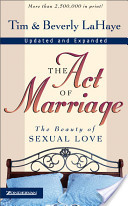
The Act of Marriage: The Beauty of Sexual Love is a self-help book, written by Christian writers Tim LaHaye and Beverly LaHaye.
Human sexuality is the way people experience and express themselves sexually. This involves biological, psychological, physical, erotic, emotional, social, or spiritual feelings and behaviors. Because it is a broad term, which has varied with historical contexts over time, it lacks a precise definition. The biological and physical aspects of sexuality largely concern the human reproductive functions, including the human sexual response cycle.
